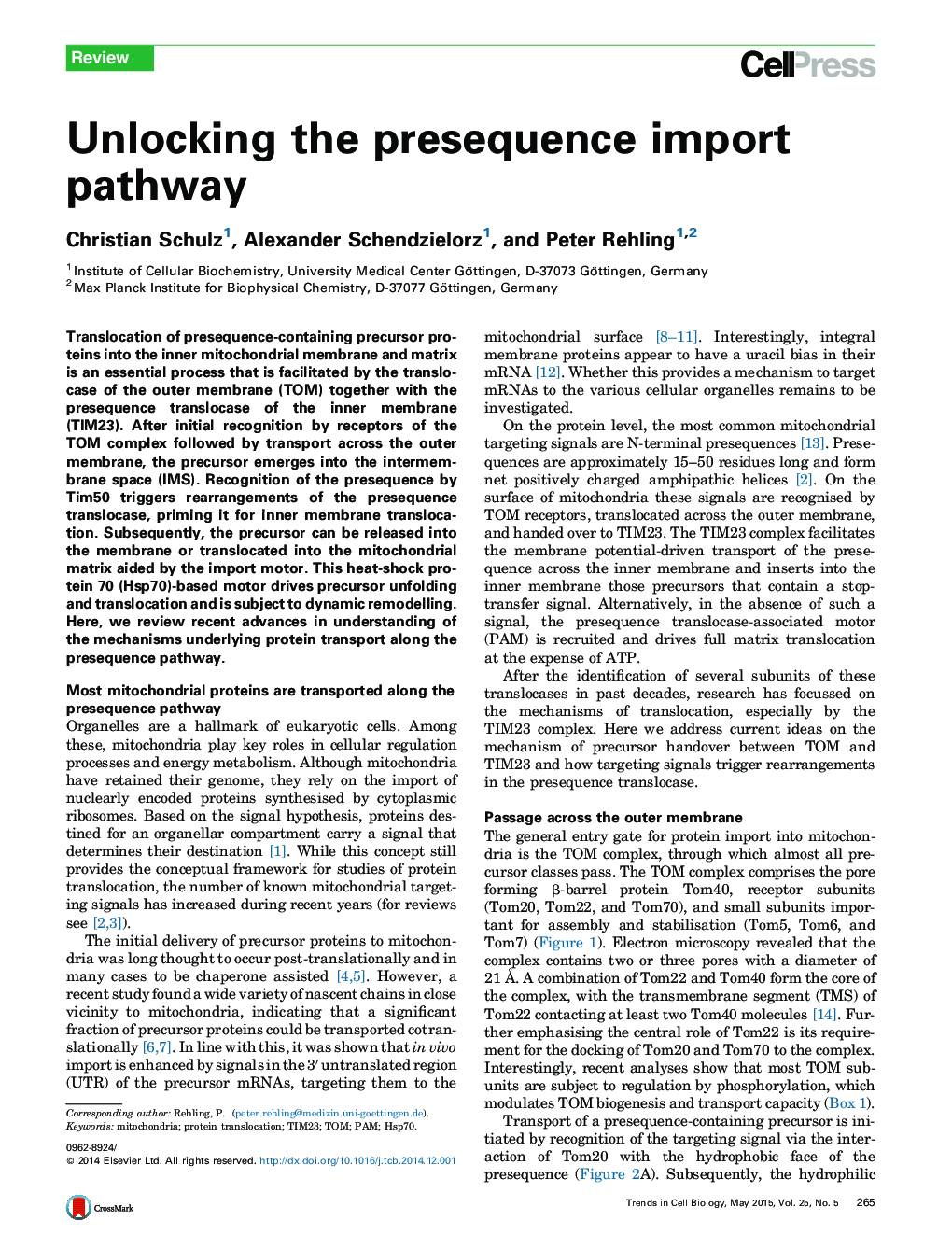| Article ID | Journal | Published Year | Pages | File Type |
|---|---|---|---|---|
| 2204397 | Trends in Cell Biology | 2015 | 11 Pages |
•Presequence transfer across the IMS requires an intricate interaction network.•The presequence translocase undergoes signal-induced remodelling.•Transport across the outer membrane is regulated by cytoplasmic kinases.•The multisubunit import motor undergoes remodelling during translocation.
Translocation of presequence-containing precursor proteins into the inner mitochondrial membrane and matrix is an essential process that is facilitated by the translocase of the outer membrane (TOM) together with the presequence translocase of the inner membrane (TIM23). After initial recognition by receptors of the TOM complex followed by transport across the outer membrane, the precursor emerges into the intermembrane space (IMS). Recognition of the presequence by Tim50 triggers rearrangements of the presequence translocase, priming it for inner membrane translocation. Subsequently, the precursor can be released into the membrane or translocated into the mitochondrial matrix aided by the import motor. This heat-shock protein 70 (Hsp70)-based motor drives precursor unfolding and translocation and is subject to dynamic remodelling. Here, we review recent advances in understanding of the mechanisms underlying protein transport along the presequence pathway.
